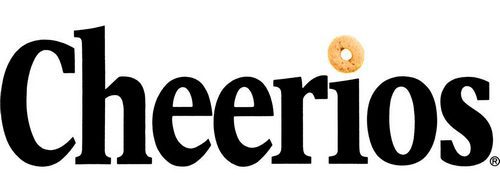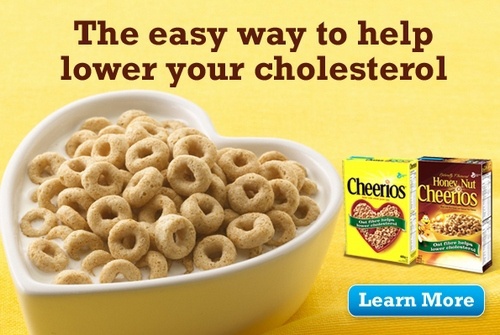The Marketing mix of Cheerios analyses the 4Ps of Cheerios, including the Product, Price, Place, and Promotions. Cheerios is a famous brand that produces breakfast cereal. It is in the shape of a Torus and includes pulverized oats. This American brand of breakfast cereals is manufactured by its parent company, General Mills, a multinational corporation dealing in the food processing industry. Cheerios were initially manufactured and produced in 1941 as Cheeri Oats, but later, in 1945, it became Cheerios. Some of the leading competitor companies of Cheerios are as follows-
- Kellogg
- Quaker
- Post
About Cheerios
- Type: Cereal brand
- Industry: Food and beverage
- Founded: 1941
- Founders: General Mills
- Headquarters: Golden Valley, Minnesota, United States
- Area served: Worldwide
- Current CEO: Jeff Harmening
- Number of employees: 38,000
- Major products: Cheerios, Honey Nut Cheerios, Multi-Grain Cheerios, Frosted Cheerios, Cheerios with Chocolatey Goodness, and Cheerios Protein
Table of Contents
Cheerios Product Strategy
Cheerios has created a distinct name for itself as a nutritious breakfast with twelve vitamins and minerals to serve as a full breakfast. Cheerios in its original form has been its main product since its inception, but in 1976, a new flavor titled Cinnamon Nut Cheerios was introduced. Its second variant was launched in 1979 and was called Honey Nut Cheerios.
These products are the mainstay of the portfolio of the brand and have become very popular. Products of this brand are available in multiple flavors with protein and heart-healthy options.
Cheerios offers a diverse product mix catering to users with different tastes and dietary preferences. The new Product Mix of Cheerios in 2023, is as follows (Source).
- Original Cheerios: The classic, lightly sweetened cereal made from whole grain oats.
- Honey Nut Cheerios: A sweeter variant with the taste of honey.
- Multi-Grain Cheerios: Made with five whole grains and lightly sweetened.
- Apple Cinnamon Cheerios: Apple and cinnamon flavored for a different twist.
- Very Berry Cheerios: Infused with the flavors of various berries.
Cheerios Place Strategy
Cheerios is a subsidiary brand and is manufactured and marketed by its owner General Mills through various retail stores. In countries like the United Kingdom, it has been launched under the Nestle brand, and in New Zealand and Australia as a product of Uncle Tobys. General Mills has a manufacturing plant in Buffalo, New York, and Cheerios are manufactured there. A good distribution policy is a must for every brand as it brings the product into direct contact with the customer. Cheerios are distributed in grocery stores and have become readily available because of their convenient locations.
Cheerios also has tie-ups with superstores like Walmart, which has nearly 11,000 stores in 28 countries. This exposure makes the product available in every part of the world. Limited edition of Cheerios packets featuring world gymnast Shawn Johnson was distributed nationwide in parts of the United States by the Hy-Vee chain of grocery stores.
Cheerios’ place strategy involves various channels and methods for this content to ensure wide availability:
- Supermarkets and Grocery Stores: Cheerios are readily available in supermarkets and grocery stores, making them accessible to a large customer base.
- Online Retail Platforms: They are available on e-commerce platforms, catering to the growing trend of online shopping.
- International Distribution: Cheerios are distributed globally, reaching consumers in many countries.
- Convenience Stores: They are also found in smaller convenience stores, expanding their reach.
- Diverse Retail Formats: Cheerios can be found in various retail formats, from large chains to local stores, ensuring wide availability.
Cheerios Pricing Strategy
Successful marketing policies by the brand Cheerios have resulted in huge growth in sales of the product. Cheerios are obtainable in many flavors and varieties. The company has kept its pricing policy similar for all its products. They have chosen an economic pricing policy and kept their prices minimum so that everyone can afford and buy it quickly. Their main target at the beginning was children; hence, it marked the lowest prices so that every child could easily manage to meet its cost. Later, as huge sales followed, the brand realized they were earning vast profits as their sales figure increased. Since then, the pricing policy of the brand Cheerios has been reasonable and affordable.
Cheerios’ pricing strategy includes the following key points:
- Competitive Pricing: Cheerios are priced competitively to match or beat the prices of similar products in the market.
- Value-Based Pricing: Pricing reflects the value and quality of the product, appealing to health-conscious consumers.
- Promotional Pricing: Frequent promotions and discounts are offered to attract customers and boost sales.
- Economy Packs: Offering larger, economy-sized packs at a lower cost per unit to cater to budget-conscious consumers.
- Premium Variants Pricing: Special flavors or limited-edition variants may be priced slightly higher to target niche markets.
Cheerios Promotion Strategy
A good advertisement is surely the best way for brands to create awareness. The brand markets its products through ads in newspapers and magazines, and its commercials are aired on television. Cheerios has targeted children through its television commercials, which feature animated characters. Bullwinkle and Hoppity Hooper were part of the ads in the early 1960s and mid-1960s respectively. The Cheerios Kid was the main character in many of its commercials as he dealt with every problem after eating Cheerios. This character was revived for an online video promotion by its brand.
Cheerios sponsored a program titled Spoonfuls of Stories since the year 2002 and in the year 2009, Shawn Johnson, a world-champion gymnast was featured in front of a box of Cheerios. Cheerios has currently targeted health-conscious people and families as its new consumers by making several announcements. In 2014, genetically modified ingredients were discontinued; in 2015, cheerios were made gluten-free with the removal of barley, rye, and wheat.
Some Recent Video ads and Print ads of Cheerios are:
Liked this post? Check out the complete series on Marketing Mix


Thank you for taking the time to dissect and analyze the marketing mix of various businesses. It helps both businesses, entrepreneurs and students like myself passionate about the business world. I have read through many posts you have done and it really has helped give me a better understanding of how businesses put in place the 4 P’s unique to their own brand and how I might implement these ideals later on as well. Thx!